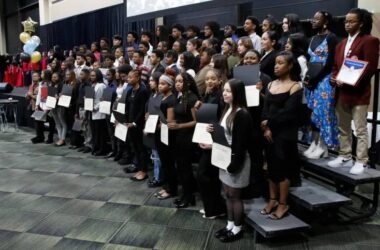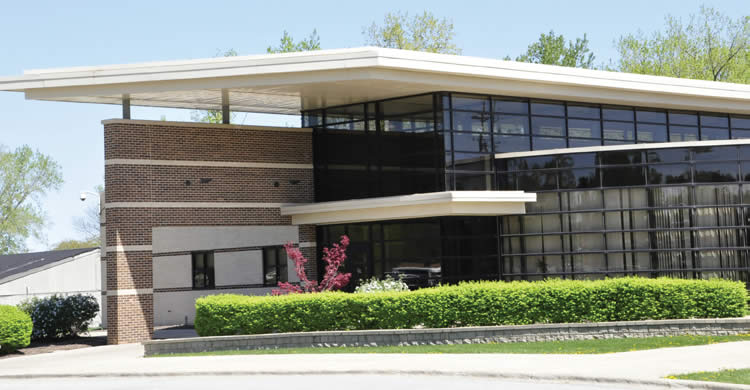WASHINGTON, D.C. –-(ENEWSPF)–June 1, 2015. U.S. Education Secretary Arne Duncan and Interior Secretary Sally Jewell announced today that the Miccosukee Indian School (MIS) has received flexibility from the Elementary and Secondary Education Act (ESEA), also known as No Child Left Behind (NCLB), to use a different definition of Adequate Yearly Progress (AYP) that meets their students’ unique academic and cultural needs. The Miccosukee Indian School in Florida is funded by the Department of the Interior’s Bureau of Indian Education (BIE).
As part of the Obama Administration’s Generation Indigenous (Gen-I) initiative to remove barriers to Native youth success, granting flexibility for the Miccosukee Indian School to define AYP specifically for their students is an important step in making the BIE work better to support individual tribal nations and Native youth. This is the first tribal school to be approved to use a definition of AYP that is different from the state in which it is located, and the flexibility is the first of its kind from the Department of Education.
“The plan that Miccosukee put forward will support culturally-relevant strategies designed to improve college and career readiness for Native children and youth,” said Secretary Duncan. “We believe that tribes must play a meaningful role in the education of native students. Tribal communities are in the best position to identify barriers and opportunities, and design effective, culturally-relevant strategies to improve outcomes for Native students.”
This flexibility builds on the work that MIS has already accomplished through its transition to higher standards and more rigorous assessments, and will allow MIS leaders to further their work to ensure students graduate high school college- and career-ready. MIS serves approximately 150 students in grades kindergarten through 12 and is the only school of the Miccosukee Indian Tribe.
“I applaud Chairman Billie and the Miccosukee Indian School for developing this innovative and culturally-relevant plan for guiding and measuring their students’ academic progress,” said Secretary Jewell. “This flexibility will help the Miccosukee Nation achieve their goal of maintaining a unique way of life, cultural customs and language by transmitting the essence of their heritage to their children. This not only advances Tribal self-determination but can also serve as a model for other tribes within the Bureau of Indian Education school system seeking to achieve the same goal for their students.”
The announcement was made during a ceremony at the Department of the Interior with Assistant Secretary for Indian Affairs Kevin Washburn, BIE Director Dr. Charles ‘Monty’ Roessel, Director of the White House Initiative on American Indian and Alaska Native Education William Mendoza, Chairman Colley Billie of the Miccosukee Tribe of Indians of Florida, and MIS Principal Manuel Varela.
According to recent U.S. Department of Education statistics, the graduation rate for American Indian students has increased by more than four percentage points over two years, outpacing the growth for all students. The graduation rate for American Indian students increased from 65 percent in 2010-11 to 69.7 percent in 2012-13. Despite these gains, the graduation rate for American Indian students is lower than the national rate of 81 percent.
A 2014 White House Native Youth Report cites Bureau of Indian Education schools fare even worse, with a graduation rate of 53 percent in 2011-12. To address the critical educational needs of these students, the Obama Administration’s Blueprint for Reform, an initiative of the White House Council on Native American Affairs chaired by Secretary Jewell, is restructuring Interior’s BIE from a provider of education to a capacity-builder and education service-provider to tribes.
In addition to reforming the Bureau of Indian Education into a service-provider to tribal schools, the Obama Administration is supporting other efforts to improve educational opportunities for Native communities, through initiatives such as:
Generation Indigenous (Gen-I): focuses on improving the lives of Native youth by removing the barriers that stand between Native youth and opportunities to succeed.
Native Youth Community Projects: provides an estimated $4 million in grants from the Department of Education to help prepare Native American youth for success in college, careers and life as part of Gen-I.
National Tribal Youth Network: supports leadership development and provides peer support through an interactive online portal.
Free Application for Federal Student Aid (FAFSA) Completion Initiative Guidance: permits states to share FAFSA completion rates with tribes to help Native American students apply for college financial aid as part of President Obama’s FAFSA Completion Initiative.
For more information, please see the letter to the Miccosukee Corporation Board and the ESEA flexibility web page.
Later today, Secretary Jewell will convene the sixth meeting of the White House Council on Native American Affairs (Council), formed by Executive Order of the President, to work more collaboratively and effectively with American Indian and Alaska Native leaders to help build and strengthen their communities. Obama Administration Cabinet Secretaries and other senior officials will continue discussions focused on several core objectives for the Council, such as reforming the Bureau of Indian Education, promoting sustainable tribal economic development, and supporting sustainable management of Native lands, environments and natural resources. The discussion will also include follow-up from additional areas of focus based on consultation with tribal leaders.
Source: doi.gov








